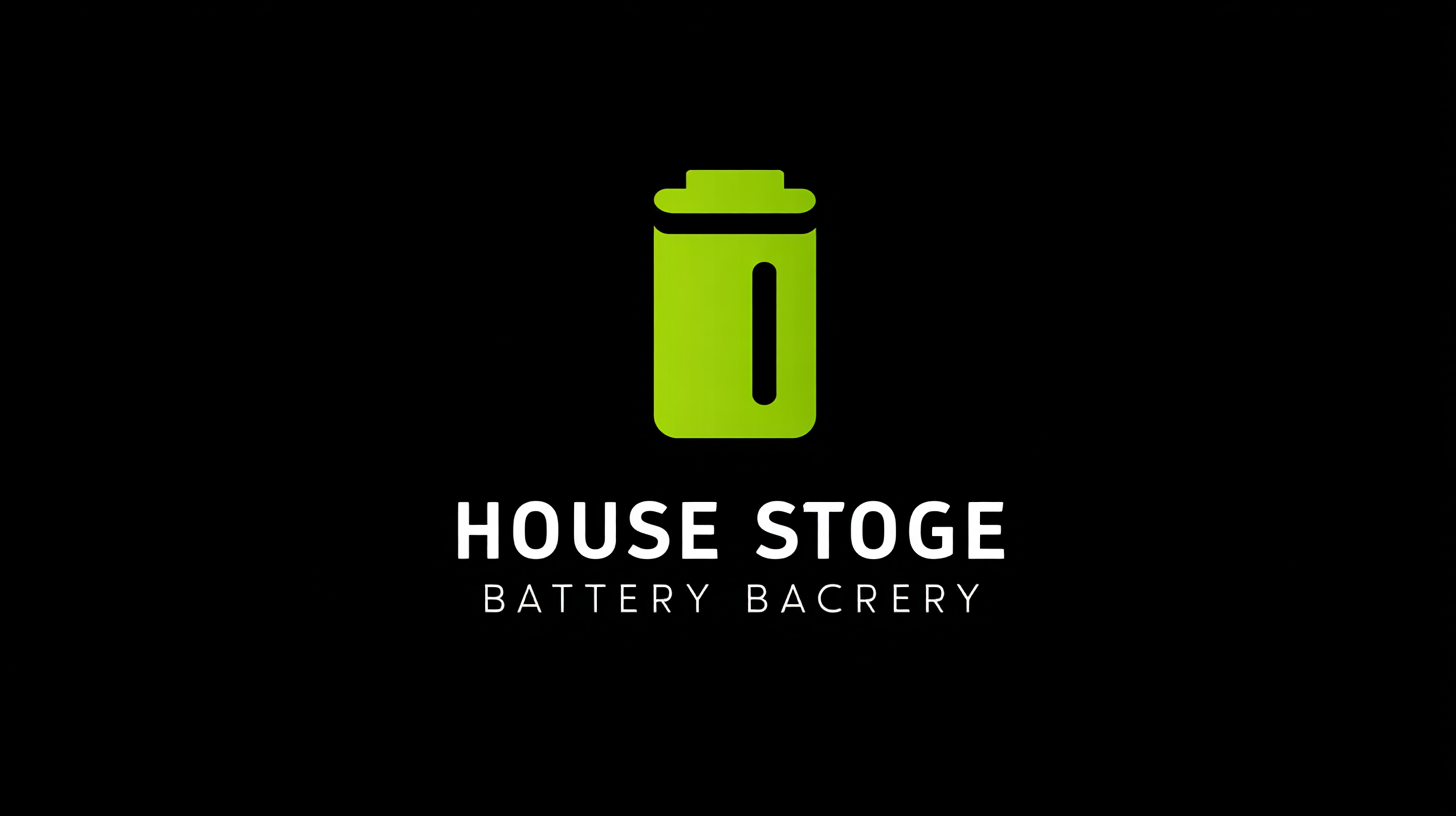As the energy landscape continues to evolve, the significance of House Battery Storage has never been more pronounced. According to a report by Bloomberg New Energy Finance, the global battery storage market is projected to grow to $546 billion by 2035, driven by increased demand for renewable energy sources and advancements in battery technology.

House Battery Storage systems not only provide homeowners with a reliable backup during outages but also enable greater energy independence and cost savings by allowing consumers to utilize stored energy during peak pricing periods. Furthermore, regulatory changes and incentives, such as those highlighted in the International Energy Agency's (IEA) Renewable Energy Market Report, are promoting the adoption of these systems, making it essential for consumers to understand the various options available.
This guide aims to equip you with the knowledge needed to choose the best House Battery Storage solution tailored to your energy needs, while also addressing industry certification standards and installation tutorials.
When considering the best house battery storage solutions, it's vital to understand the different types available today. Primarily, there are grid-scale storage systems designed to connect with the power grid, ensuring that energy can be stored and dispatched at optimal times. These systems play a crucial role in balancing supply and demand, especially as renewable energy sources become more prevalent. Innovations in battery energy storage technologies are enabling households to harness energy from solar panels more efficiently, making it imperative to explore the options that best fit your energy needs.
Additionally, home battery systems are becoming increasingly popular for providing backup power during outages. A typical household requires approximately 11.4 kilowatt-hours (kWh) of storage capacity to maintain essential devices. As advancements continue, understanding the cost-effectiveness of these systems is crucial. While the market may show a price around $5,000 for standard units, it's essential to evaluate whether this investment aligns with your household's consumption patterns and energy goals. Conducting discrete comparisons among various brands and models will guide you toward a decision that secures both savings and reliable power for the future.
When choosing a house battery storage system, several key factors should be meticulously evaluated to ensure it meets your energy needs effectively. Firstly, capacity is critical. According to the U.S. Energy Information Administration, household battery systems generally range from 5 kWh to 20 kWh in storage capacity. This capacity directly influences how much energy you can store from renewable sources like solar panels and how long you can power your home during outages or peak demand periods.
Another vital consideration is the system's chemistry. Lithium-ion batteries dominate the market due to their efficiency and longevity, with life spans ranging from 10 to 15 years. Reports from BloombergNEF indicate that the cost of lithium-ion battery packs has dropped over 89% since 2010, making them more accessible for homeowners. Additionally, assess the inverter type, as a reliable inverter ensures the efficient conversion of stored energy for household use. Evaluating these factors will help you choose a system that optimally aligns with your energy requirements and financial constraints.
| Feature | Dimension | Description |
|---|---|---|
| Capacity | 5 kWh - 15 kWh | The amount of energy the battery can store, affecting how long it can power your home. |
| Cycle Life | 3000 - 7000 cycles | The number of charge and discharge cycles the battery can undergo before its capacity significantly diminishes. |
| Warranty | 5 - 10 years | The period during which the manufacturer guarantees the battery's performance and capacity. |
| Efficiency | 85% - 95% | The percentage of stored energy that can be used when discharging the battery. |
| Installation | Professional or DIY | The complexity involved in setting up the battery system, which can impact overall costs. |
| Scalability | Expandable | The ability to add more batteries to increase capacity as energy needs grow. |
| Type | Lithium-ion / Lead-acid | Different battery technologies with varying characteristics, lifespans, and costs. |
When choosing the best house battery storage for your energy needs, a critical comparison lies between
lithium-ion and
lead-acid batteries.
Lithium-ion batteries are widely recognized for their high energy density and longer life cycles. Recent tech-economic analyses indicate that while the initial investment for lithium-ion systems may be higher, their longevity—often exceeding
10 years—justifies the expense, particularly for stationary energy applications. This makes them a preferred choice for larger setups or homes that rely heavily on renewable energy sources.
However, lead-acid batteries remain a viable alternative, particularly due to their lower upfront costs, which can be
40% to 50% less than lithium options. They are well-suited for users with limited budgets or lower energy needs. Their robustness and reliability in solar applications also play a significant role in their continued popularity, even as the focus shifts toward more advanced technologies.
Tips:
 When considering house battery storage systems, the focus on cost efficiency and return on investment (ROI) has never been more critical. Recent studies highlight that integrating solar photovoltaic (PV) systems with battery energy storage can significantly reduce household energy costs. For instance, pairing solar PV with battery systems can decrease electricity imports from the grid by as much as 84%, effectively doubling self-consumption rates. This means homeowners not only harness renewable energy but also maximize financial benefits by cutting down on utility bills.
When considering house battery storage systems, the focus on cost efficiency and return on investment (ROI) has never been more critical. Recent studies highlight that integrating solar photovoltaic (PV) systems with battery energy storage can significantly reduce household energy costs. For instance, pairing solar PV with battery systems can decrease electricity imports from the grid by as much as 84%, effectively doubling self-consumption rates. This means homeowners not only harness renewable energy but also maximize financial benefits by cutting down on utility bills.
Moreover, the potential for government schemes to subsidize these systems is notable. A recent initiative suggested that a re-elected Labor Government might reduce the cost of home batteries by 30% via the Small Renewable Energy Scheme (SRES), making this an increasingly attractive investment for homeowners. Additionally, a techno-economic analysis conducted for residential renewable energy systems suggested that residents could achieve significant returns through smart investments in energy storage. By exploring these economic evaluations, homeowners can better navigate their options and capitalize on the benefits of advanced energy storage solutions in a rapidly evolving market.
When it comes to selecting the best house battery storage for your energy needs, evaluating capacity, lifespan, and warranty is essential. Capacity indicates the amount of energy a battery can store, typically measured in kilowatt-hours (kWh). Assess your household's energy consumption and choose a battery that can cover your peak usage times. For example, if your household requires 30 kWh per day, opting for a battery with at least that capacity will ensure you have enough power during outages or peak demand.
Lifespan is another critical factor. Most batteries have a cycle life, which signifies how many times they can be charged and discharged before performance declines significantly. Look for batteries with a longer cycle life, as they will give you better value over time. Additionally, consider the depth of discharge (DoD); batteries that can be deeply discharged without compromising their lifespan tend to be more efficient.
Don’t overlook the warranty. A robust warranty indicates the manufacturer’s confidence in their product. Many warranties range from 5 to 15 years, so make sure to read the fine print regarding what is covered. It's also worthwhile to check if the warranty can be transferred if you decide to move. Ultimately, choosing a battery with a solid warranty plan ensures peace of mind for your investment.
